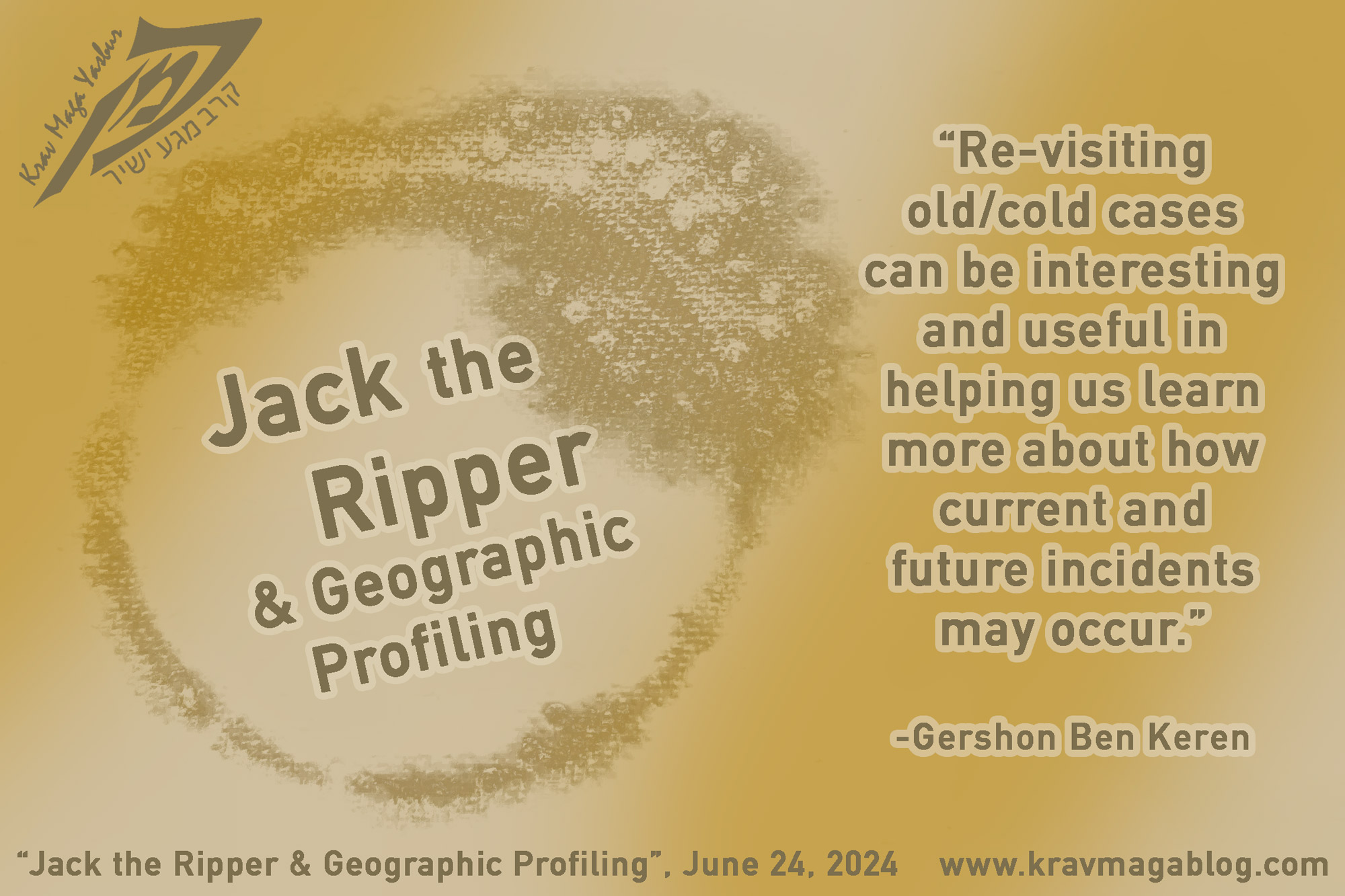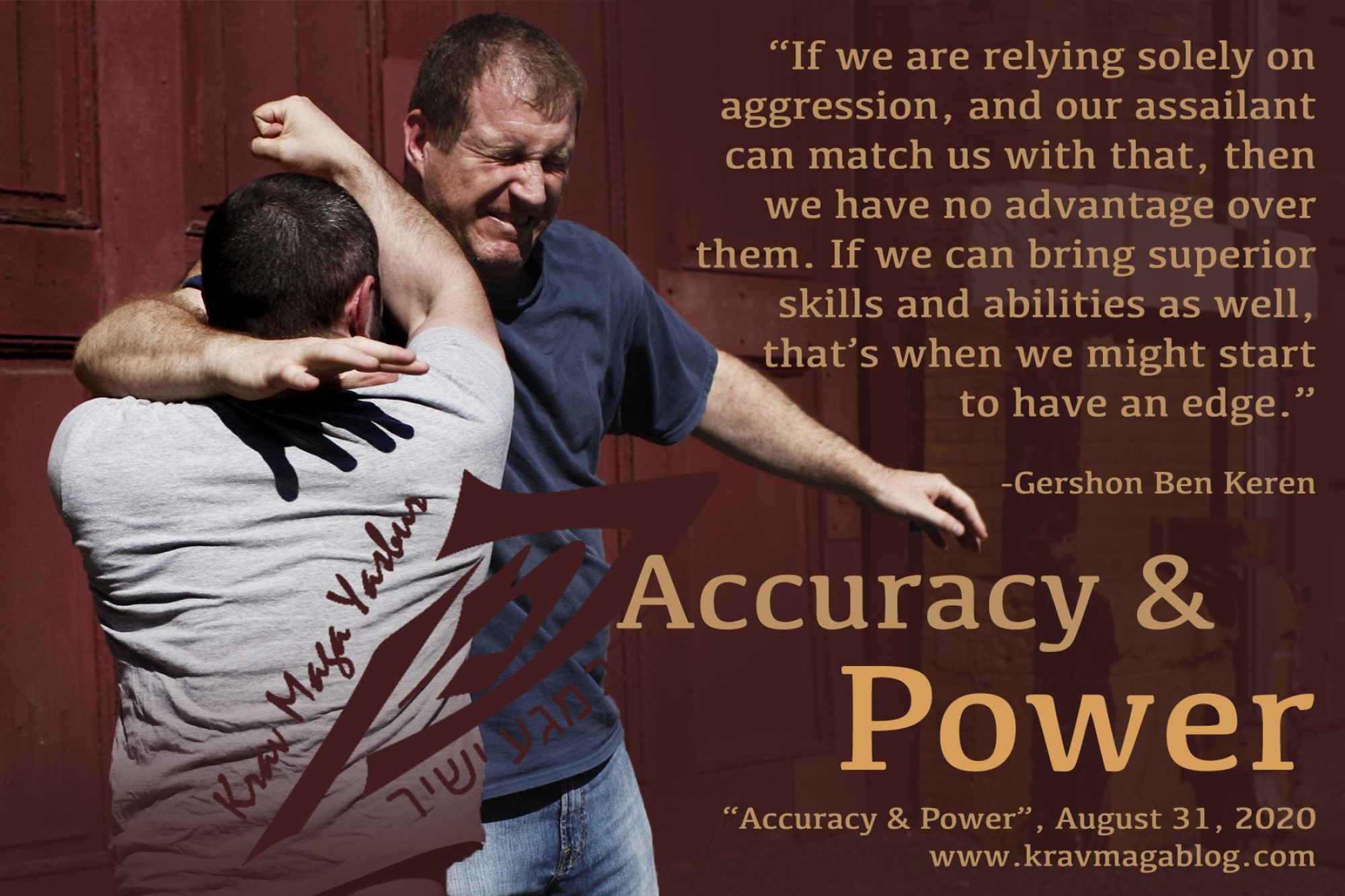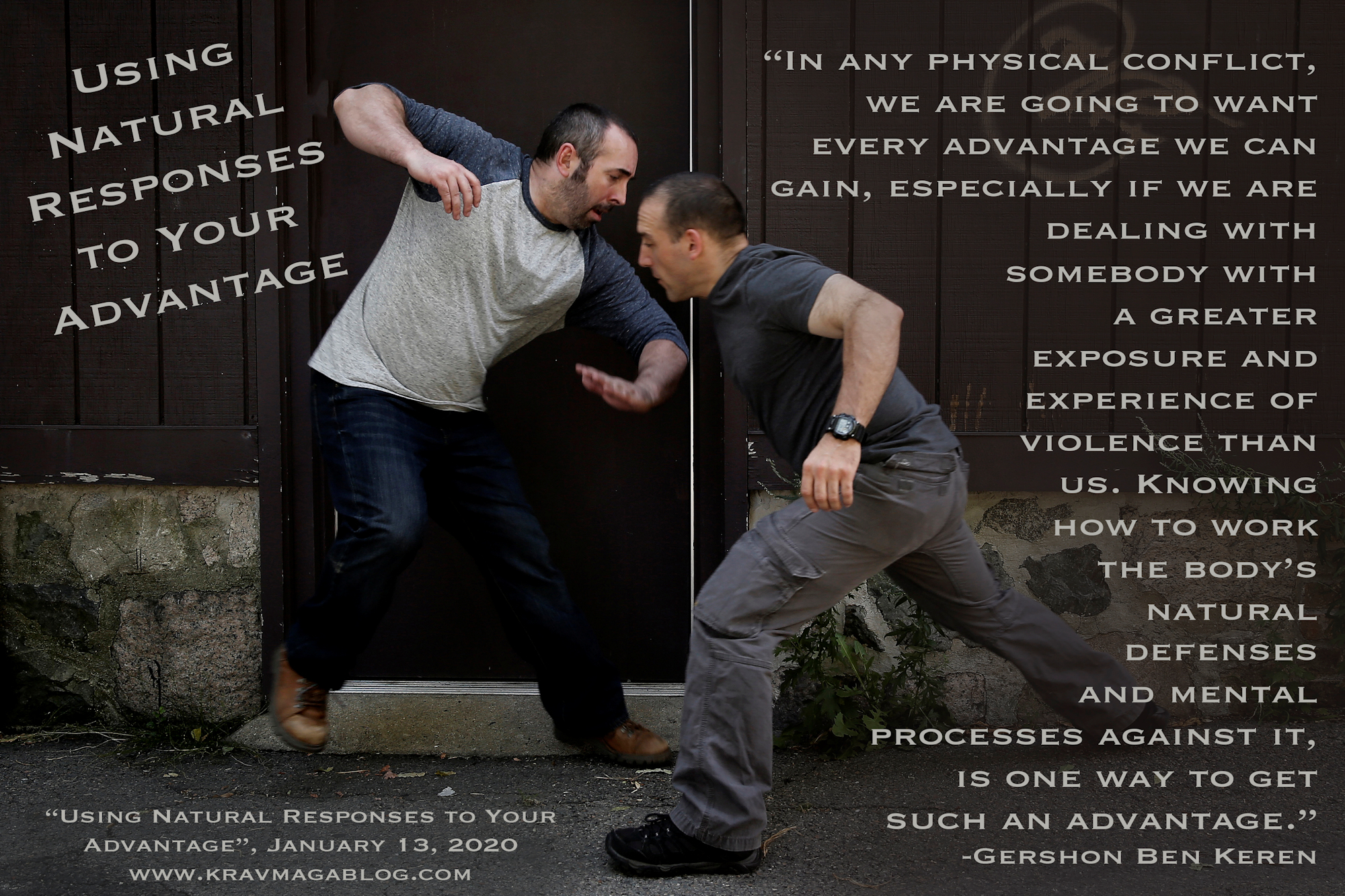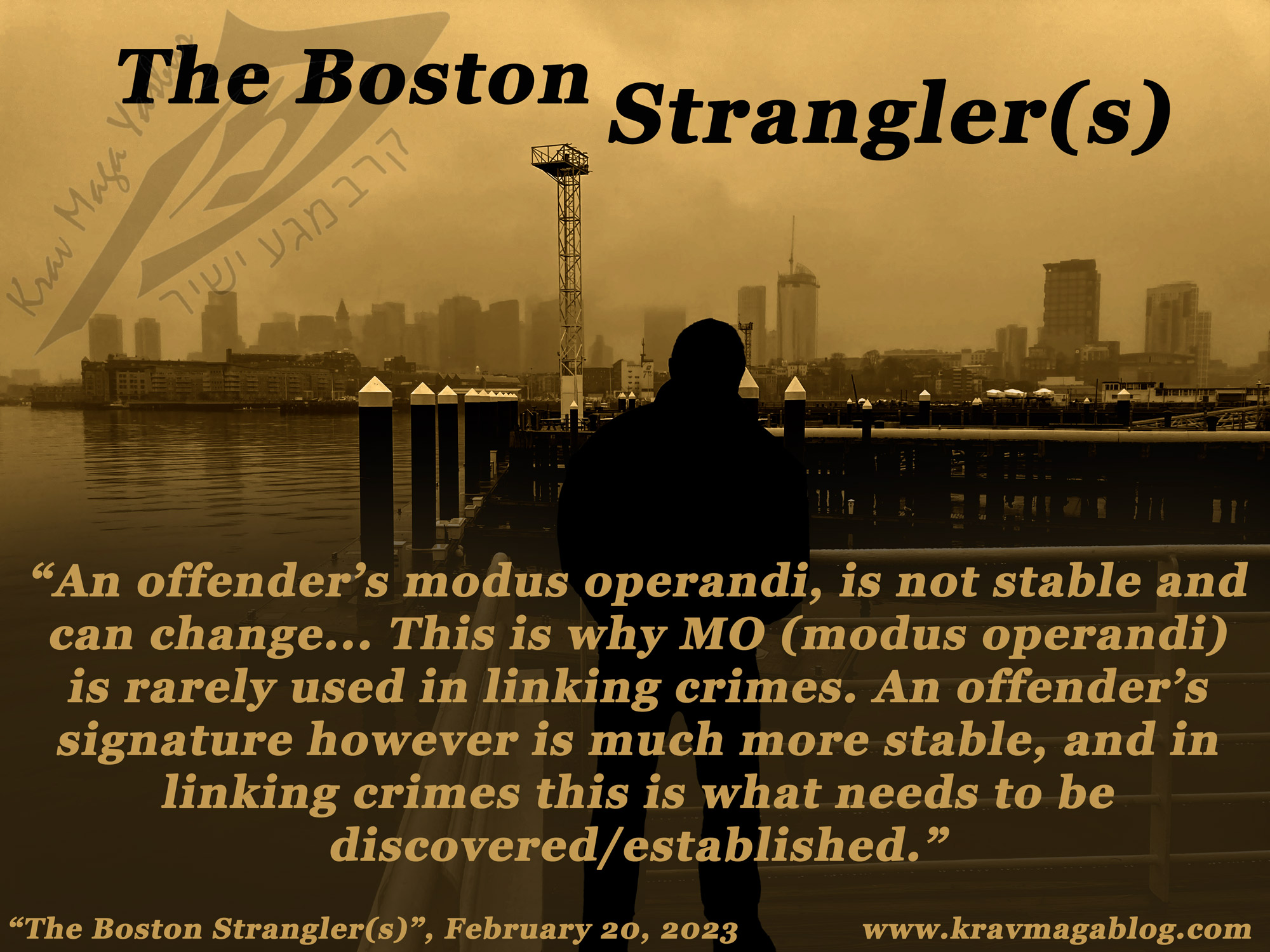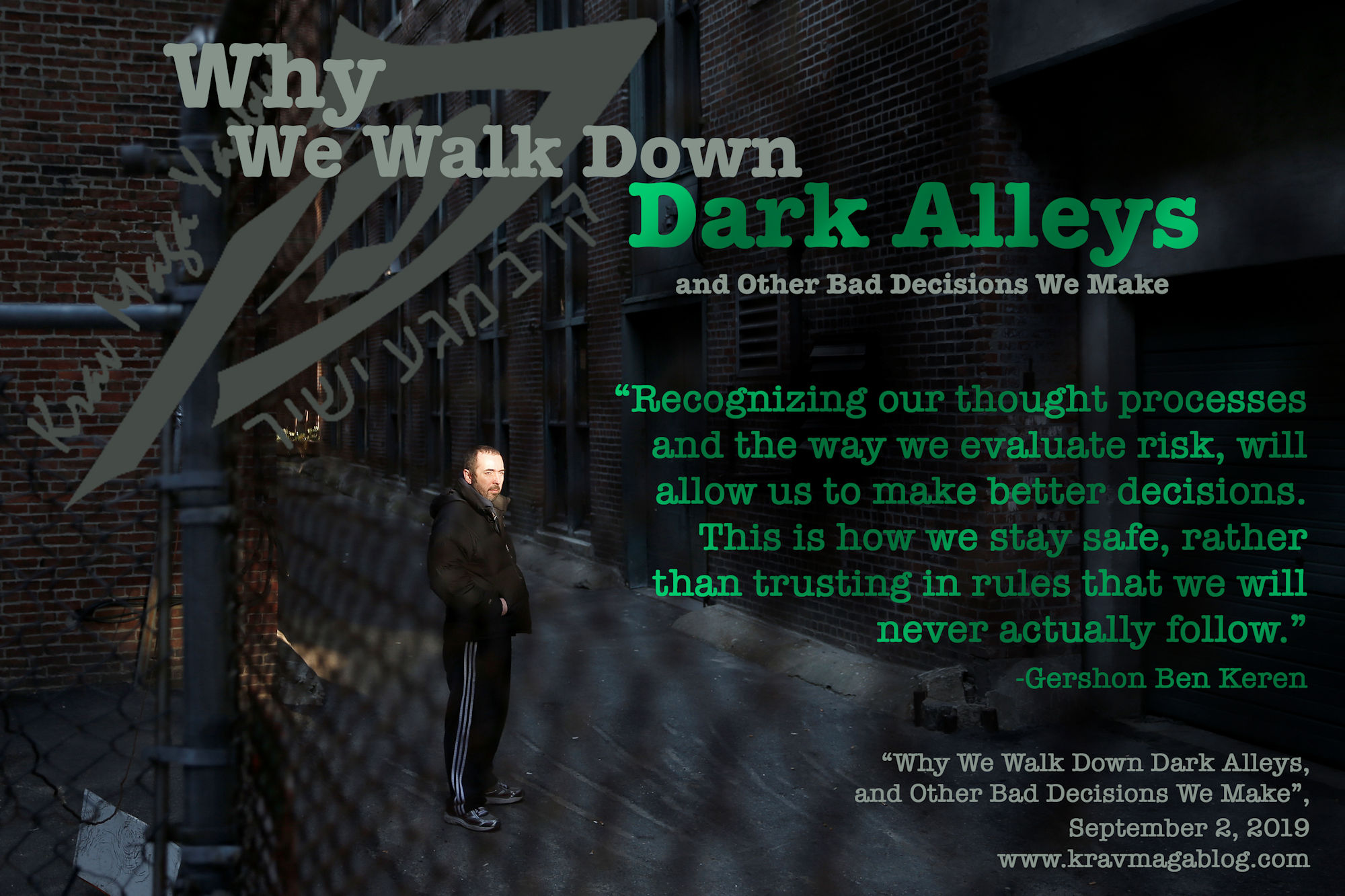Why We Walk Down Dark Alleys, is an article written by Gershon Ben Keren, a 5th Degree Black Belt in Krav Maga, who teaches Krav Maga in Boston, MA. He has also authored three Amazon best-Selling Books on Krav Maga.
Personal safety must be something more than a set of rules we should follow. There are two basic reasons for this: first, if those we are trying to protect ourselves against know these rules, then they will develop methods for circumventing them, and second, we aren’t good at following them – and I would go somewhat farther by saying that our brains aren’t designed to follow such rules. There are few people who haven’t walked down a dark alley, let a stranger into their house, etc., or acted against what would be their better judgment; and probably in 99% of cases there was no adverse consequence to these actions and behaviors. This article looks at why we make “bad” decisions in the moment and follows on from last week’s article on why our general attitude to personal safety is a choice.
If you were given the choice between a 100% chance to win $900, or a 90% chance of winning $1000 or getting nothing, which one would you take? To put it another way, with the first option it is guaranteed that you will get $900, whilst with the second option there’s a 10% chance you’ll get nothing. Repeated studies have shown that around 80% of people when posed with this question will take the certain outcome and opt for the $900. However, if you were given the option of a 100% chance of losing $900, or a 90% chance of losing $1000 or $0, which would you choose? In this case, most people will choose the second option. This is because when we look to avoid losing something, we tend to accept risk; taking a chance of a greater loss over a certain loss. If you are in a hurry, and you know that if you don’t take the shortcut down the dark alley, you’ll be late getting home (100% certainty), and that if you do there’s a 90% chance that you’ll make it on time, but a 10% chance that something may happen to you, it is likely that you will take that chance – even though the consequences of doing so may be far more serious. In such a case, the rule that we have about not walking down a dark alley, doesn’t even come in to play. If you have a rule that you shouldn’t get into a car with a stranger, but on a first date, after dinner someone you really like offers you a ride home, or to go with them to another bar or club, etc., you may think that if you refuse, they will judge you, think less of you, and possibly not want to see or contact you again, etc., and so you may take the risk of getting into the car with them. When we perceive a potential loss, we take risks i.e. we do stupid things. Also, risk-taking can be exciting, creating more positive experiences, and so it holds its own attraction, that mundane certainty lacks.
We are not fully rational in the decisions we make; we don’t evaluate loss and gain equally. Kahneman and Tversky (1979), put forward an idea they referred to as prospect theory, which states that “People make decisions based on the potential value of losses and gains rather than the final outcome”. How we view the world in terms of gains and losses is important because of the way it affects our decision making. If we view life as a series of opportunities that if we don’t take will be gone, and unlikely to be repeated, we are likely to take risks in order to avert these potential losses. People with low self-esteem, who believe few good things ever happen to them, are not by nature risk-takers, but they are adverse to losing any good thing that has happened, or is happening to them; and this means that they take chances, that could potentially lead them into harm and danger. I was bullied as a kid, and those that bullied me, understood this very well – though it took me a relatively long time to learn. Every now and again they would relent from their bullying and be friendly, including me in their group. As a child who was socially isolated, this temporary friendship was something I didn’t want to lose, and I accepted the risk that they would turn on me; and it was an extremely high risk, because being nice to me had only one goal, which was to put me off my guard, and increase the effect of their bullying. After each of these incidents, I made the rule that I wouldn’t be fooled again, and the rule was never powerful enough to stop me taking the chance, because I didn’t want to lose the possibility of being accepted; it always seemed to be a risk that was worth taking even though I was very aware of the final outcome.
Predatory individuals understand how to identify people who are more averse to loss than they are motivated by gain – and they also know how to create and frame situations to emphasize the potential loss. Prospect Theory recognizes something called the Isolation Effect – also known as the Von Restorff Effect, after the psychologist who first defined it. This refers to the fact that we tend to focus and act upon information that stands out and differs from the rest. Predatory individuals are skilled at recognizing how we think about loss, and then framing things in a positive way.
Gavin De Becker, refers to a certain tool that predators use as the “Unsolicited Promise”. Imagine you have gone on a first date with somebody, and after dinner they ask you to go with them to a bar they know, in order to continue the evening. Effectively, you have just been given a second date early – to not go with them would be to lose the date. If you’ve had a run of disastrous dates i.e. a string of losses, you are more likely to not want to increase your losses, and so accept the offer. If during the meal, amongst the small talk they’ve paid you a fairly serious complement, you are likely to remember this more than anything else that was said due to the Isolation Effect. If the individual has nefarious intent towards you, this was not by accident – they might not understand the psychology behind it, but they know how to socially disarm people. As you both go to your cars to drive to the bar, your date (the person you first met in person an hour ago) says, “tell you what, it’s not the easiest place to find, why don’t I drive us and I can drop you back here afterwards?” As you start to object, they smile and say, “why don’t you just get in, nothing’s going to happen.” They’ve framed things in such a way that if you refuse, it can only be for one reason – because you do think something’s going to happen, and you’d have just communicated that to them; increasing the chances of them not wanting to contact you again i.e. a loss. All the nice things they said to you, about you, are circling around in your thoughts, due to the Von Restorff Effect, telling and convincing you that this is a nice person – even though you’ve spent less than an hour with them. Also, the rule about not getting into cars with strangers, applies to cars pulling up to you when you’re out walking, not in situations like this. The question is: do you accept the risk and go with them?
We’ve all made bad decisions where there were no consequences, where we didn’t get punished for them. However, it is important to understand why we made these, so that we don’t make them again. A string of bad decisions where nothing bad happens, creates a recency bias e.g. I walk down this dark alley all the time, and nothing has ever happened, etc. Recognizing our thought processes and the way we evaluate risk, will allow us to make better decisions. This is how we stay safe, rather than trusting in rules that we will never actually follow.
0 COMMENTS

